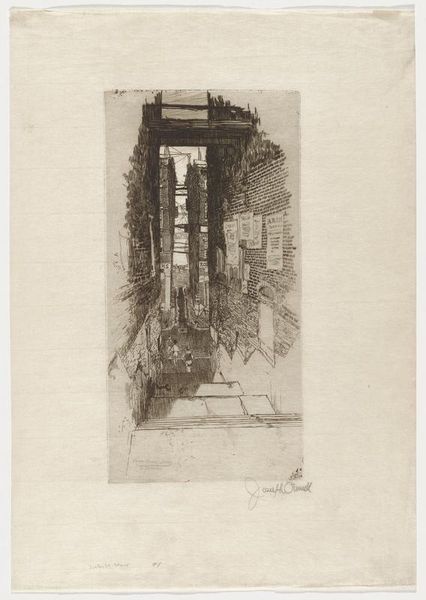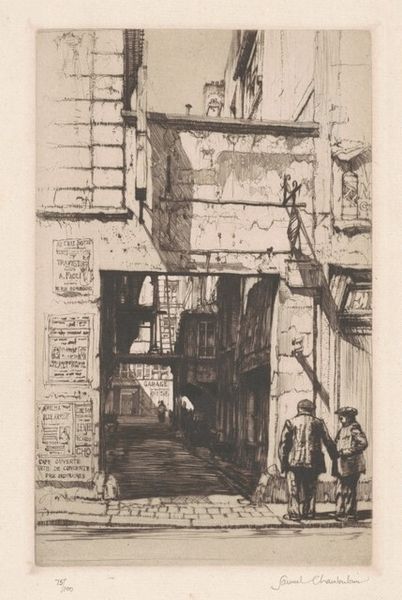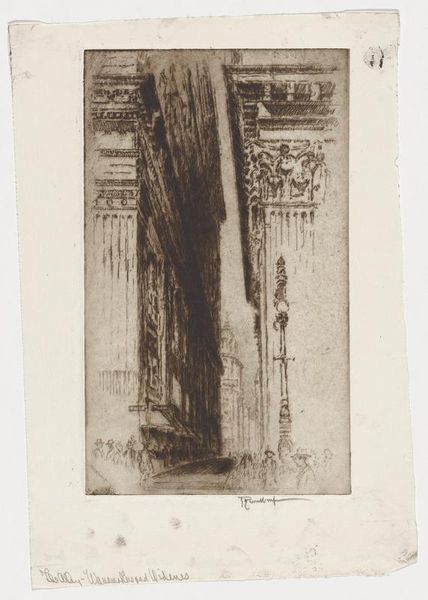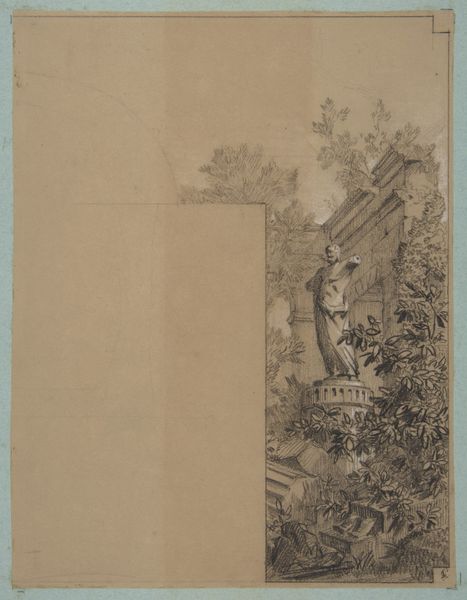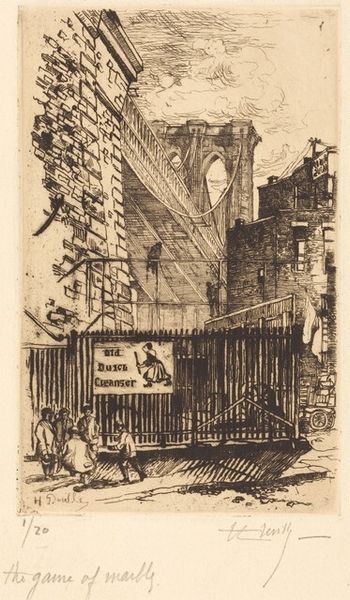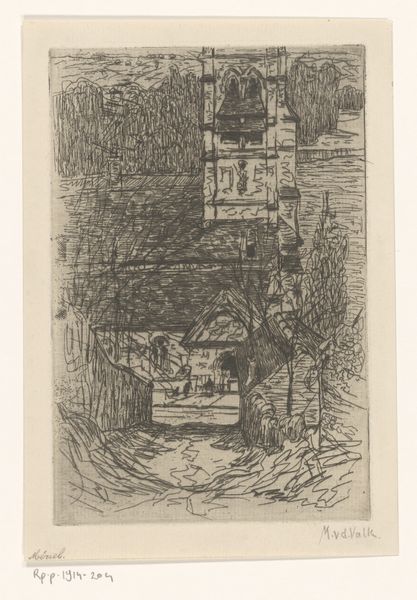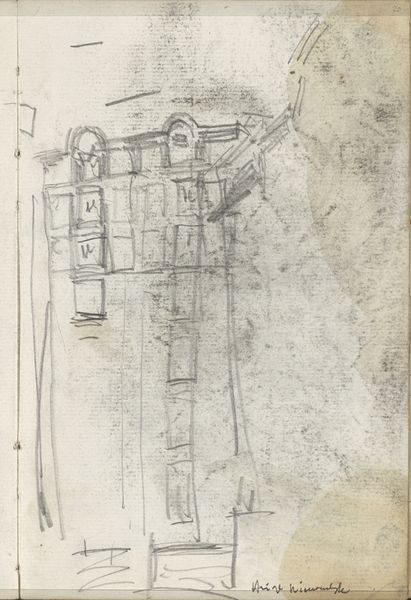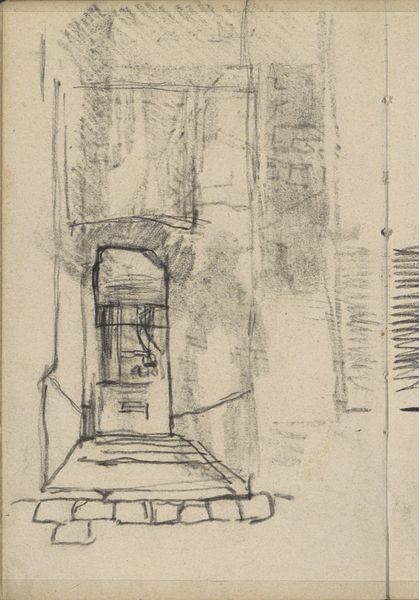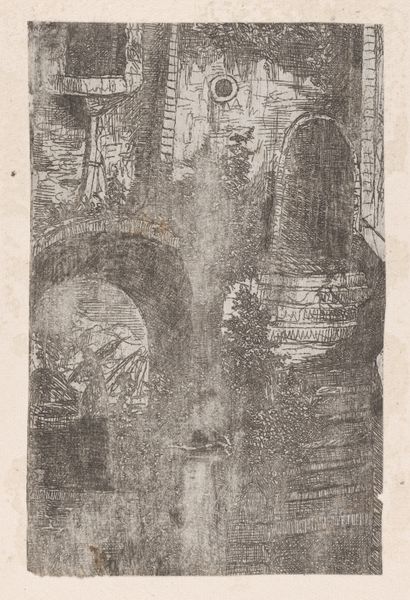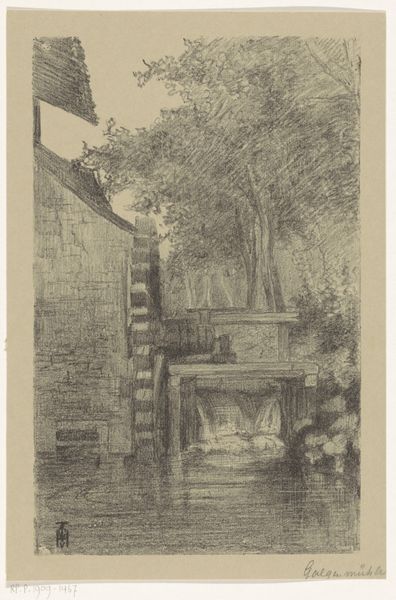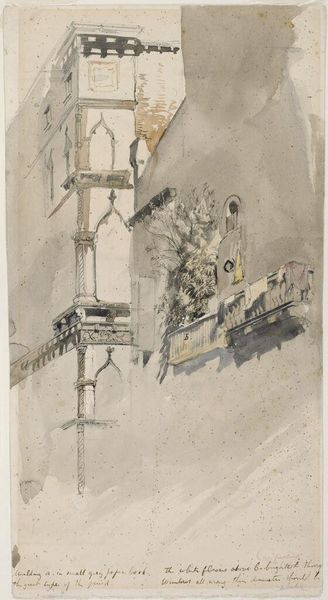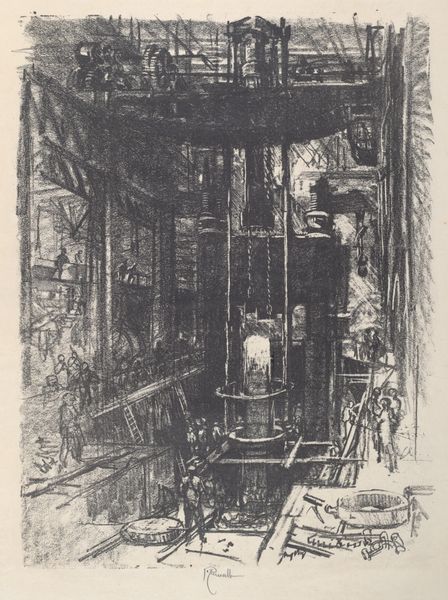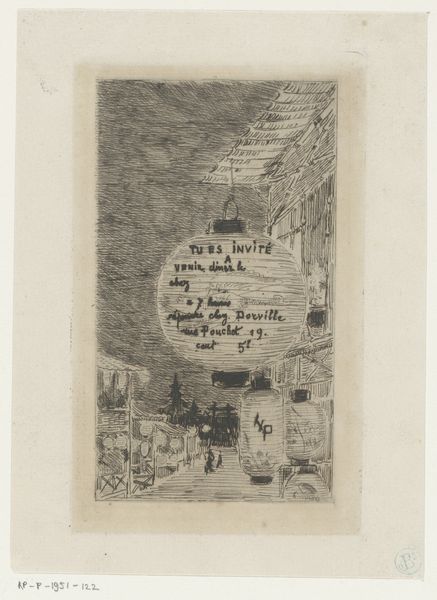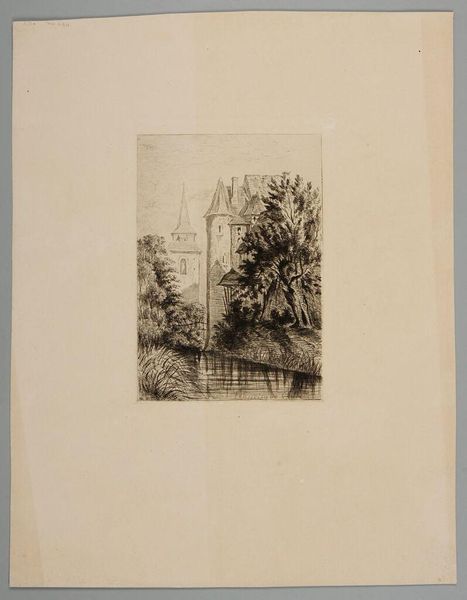
drawing, print, etching, engraving
#
drawing
# print
#
impressionism
#
etching
#
landscape
#
perspective
#
united-states
#
line
#
cityscape
#
engraving
#
realism
Dimensions: 11 5/16 x 5 7/8 in. (28.73 x 14.92 cm) (plate)15 x 9 1/16 in. (38.1 x 23.02 cm) (sheet)
Copyright: No Copyright - United States
Curator: Looking at this print from 1881, "Water Street Stairs" by Joseph Pennell, I am struck by the almost claustrophobic verticality it presents. What is your immediate reaction? Editor: That initial feeling is immediately compelling, certainly. It almost sucks you into the vanishing point with an unsettling perspective. The high contrast and sharp lines amplify that feeling. Curator: Pennell, an American expatriate artist, made this etching as part of his larger body of work documenting urban scenes and architecture. Notice the stairs leading down, drawing our eyes towards the street, and consider this: In the late 19th century, the representation of urban life began shifting. What kind of imagery had he captured? What's implied? Editor: He’s really playing with our perception. The contrast of light and shadow, rendered by this particular etching technique, it actually obfuscates. Is he creating social commentary on industrialization or commenting on aesthetics? Curator: That tension is indeed crucial. Pennell certainly saw himself as an artist capturing the honest realities of urban existence. These cramped quarters suggest dense urban environments and economic stratification of the time. There seems to be the suggestion of everyday labor, lives lived within that narrow slice of urban space. Editor: Indeed. There is a striking juxtaposition of detail in the textures of the brick and posters with the ambiguous representation of human forms in the deep background that lends itself to this point. I keep thinking that this print feels much like a diagrammatic analysis of urban structure and it’s all built within formal design. Curator: What seems equally intriguing is how Pennell frames the cityscape itself. Consider how art institutions exhibited these works. Urban realities became fashionable, even consumable as picturesque views, separated from any lived social impact. Editor: And so his clever deployment of perspective transforms social document into high art. Curator: I agree, but this approach opens crucial insights on what, then, was accepted for consumption and for scrutiny, prompting questions about urbanism and social strata in cities. Editor: Fascinating. It highlights how something aesthetically gripping, in its use of shadow and light, line and form, can be embedded with social, cultural and historical reflections, transforming our understanding and reception of the era that it depicts.
Comments
No comments
Be the first to comment and join the conversation on the ultimate creative platform.
